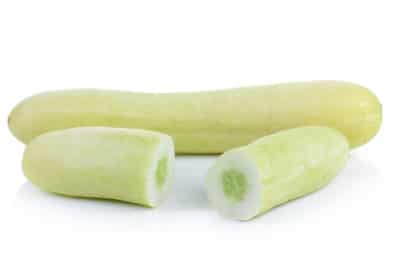White Cucumber Varieties
Both vining and bush white cucumber varieties are available for home growers. Well-known cultivars include:
- ‘White Wonder,’ introduced in 1893. Its container-suitable, 3-foot vines begin yielding creamy-white, 6- to 8-inch fruit in 60 days. Known for their clean, cool taste and crunchy texture, they’re equally good as slicing or pickling cukes.
- ‘Crystal Apple,’ a bush cultivar from New Zealand, first commercialized in 1934. It round, 3-to 4-inch fruits look more like apples than cucumbers. They’re white-skinned slicers with just the faintest tinge of green.
- ‘Salt And Pepper,’ a vining variety resistant to powdery mildewand leaf spot, two common cucumber diseases . At the picking stage, its 3- to 5-inch pickling cukes are yellowish-white with a sprinkling of tiny black spines.
Growing White Cucumbers
White cukes need the same growing conditions as green ones:
- Loose, well draining soil with plenty of organic matter.
- Six or more hours of daily sun.
- At least 1 inch of water per week; 2 inches if temperatures are above 85°F (29.4°C).
- Side dressing with organic compost or fertilizer after the first flowers appear.
White Areas on Green Cukes
When white areas blemish the green-skinned cukes you planted, one of these problems is the likely cause.
Blanching
Cucumber fruit short on sunlight develops blanched white areas. To prevent blanching, trim back the foliage around each cuke as it starts developing.
Overwatering
As thirsty as they are, even cucumbers can get too much water. If excessive watering leaches phosphorus from the soil, the developing fruit may become white or pale green. Remedy the problem by working a high-phosphorus fertilizer into the soil at the manufacturer’s recommended rate and cutting back on watering.
